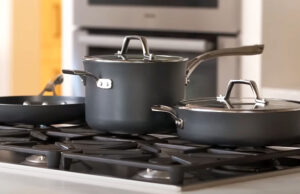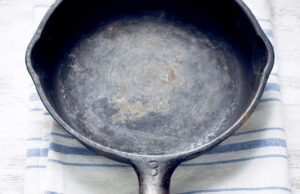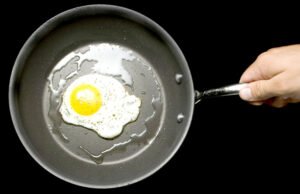As an Amazon Associate, I earn from qualifying purchases at no extra cost to you.
Kenmore Ultra Wash Dishwasher Not Draining? Fix It Fast
Have you ever opened your Kenmore Ultra Wash dishwasher and found dirty water sitting at the bottom? It feels frustrating, right? However, the good news is that this problem is common, and most of the time, it can be fixed at home with minimal stress. In this article, I will show you easy ways to solve the draining issue so your dishwasher runs smoothly again.
Check the Dishwasher Filter and Clean It
The filter in your Kenmore Ultra Wash dishwasher can easily get clogged. Food bits, grease, and even small pieces of glass can block it. When the filter is blocked, the water has nowhere to go. This is one of the most common reasons for a dishwasher not draining properly. So, the very first thing you should do is check the filter.
Open the dishwasher and remove the bottom rack to reach the filter. Most models have the filter right under the spray arm at the bottom. It may look like a round or rectangular mesh piece. Twist or pull it out carefully. You might be surprised at what you see inside. Sometimes it is packed with old food or even paper labels from jars. Clean it well using warm, soapy water and a soft brush.
After cleaning, place the filter back exactly the way it was. Make sure it fits tightly and is locked into place. If the filter is not seated correctly, water will not flow as it should. Many people forget this step and still face draining issues even after cleaning. So double-check before moving on.
- Take out the bottom rack before checking the filter
- Look for stuck food, grease, or paper pieces
- Wash the filter with warm water and soap
- Put the filter back tightly in the right place
- Test the dishwasher to see if it drains now
Inspect the Drain Hose for Clogs or Kinks
The drain hose is the next big part to check. This hose carries the dirty water out of your Kenmore Ultra Wash dishwasher. If it gets blocked or bent, water will not pass through. Many times, food pieces or grease buildup can cause a blockage inside the hose. Sometimes, the hose just gets bent behind the dishwasher, stopping water from flowing out.
First, unplug your dishwasher and pull it out gently if it is built into the cabinet. You will see the drain hose at the back, usually connected to the sink drain or garbage disposal. Check carefully if it has bends or kinks. Straighten them out if you find any. Even small bends can stop water from draining properly.
Next, detach the hose from the connection. Keep a bucket or towel ready because some water may spill out. Look inside the hose. If you notice food, grease, or even soap buildup, it is time to clean it. A long flexible brush or a plumbing snake can help remove blockages. Rinse the hose with warm water after cleaning.
When reattaching, make sure the hose is fitted tightly to both ends. Loose connections can leak water onto your floor. After putting it back, run the dishwasher again to test if it now drains. If water still sits inside, then the issue might be deeper in the system, but checking this step is very important.
- Check if the hose is bent or kinked
- Disconnect and clean the hose with warm water
- Use a brush or a snake tool for stubborn clogs
- Attach the hose tightly back in place
- Test the dishwasher again after cleaning
Clear the Garbage Disposal Connection
Many Kenmore Ultra Wash dishwashers are connected to the garbage disposal under the sink. If the disposal is blocked, the dishwasher will also fail to drain. This is often missed because people forget that both share the same drain path. A clogged or dirty disposal can back up water into your dishwasher.
First, run your garbage disposal. Turn on the tap and let cold water flow. If the disposal makes a loud sound but does not grind, it may be blocked. In that case, unplug the disposal before trying to fix it. Use tongs or pliers to remove any stuck food or foreign objects inside. Never use your hands directly inside a disposal for safety.
Another common mistake happens when a new disposal is installed. There is usually a small plastic knockout plug inside the connection point where the dishwasher hose attaches. If the installer forgets to remove this plug, water cannot pass through. Check if your dishwasher is newly installed or if you recently replaced your disposal. If so, remove the plug with a screwdriver.
- Run garbage disposal with cold water flow
- Clear stuck food or objects safely
- Check for plastic knockout plug in new disposals
- Keep disposal clean for smooth water flow
- Test dishwasher after clearing disposal
Look at the Drain Pump for Blockages
The drain pump is another key part of the dishwasher that pushes water out. If it is blocked, broken, or stuck, your Kenmore Ultra Wash dishwasher will not drain. Small items like glass, bones, or even seeds can slip inside and jam the pump. This is why checking the pump is very important when other fixes do not work.
To reach the pump, you may need to remove the bottom panel of your dishwasher. Make sure to unplug the power first for safety. The drain pump is usually a small round motor connected to the drain hose. Look carefully inside for any stuck objects. Sometimes you may hear a humming noise when the dishwasher tries to drain. That sound means the pump is trying but something is blocking it.
If you find something inside, remove it gently with pliers or tweezers. Clean the pump area with warm water to remove grease. If the pump looks damaged or burned, you may need a replacement. Most pumps are affordable and can be replaced at home with some basic tools. But if you are not sure, a technician can do it for you.
Once the pump is clear, reassemble everything and test the dishwasher again. You should now hear the pump working and water draining out. If it still does not drain, then the problem may be electrical or deeper in the system.
- Disconnect power before touching pump
- Remove bottom panel to find pump
- Check inside for stuck food or glass
- Clean pump area with water if greasy
- Replace pump if damaged or burned
Reset the Dishwasher Control Panel
Sometimes the problem is not with parts but with the control system itself. Dishwashers use electronic panels to manage cycles. If the system glitches, your Kenmore Ultra Wash dishwasher may stop mid-cycle and leave water inside. A simple reset can clear the glitch and get everything back to normal.
To reset, unplug the dishwasher for about 5 minutes. If it is hard-wired, switch off the circuit breaker instead. This cuts the power fully, which resets the control board. After 5 minutes, turn it back on and run a short wash cycle. In many cases, the dishwasher drains properly after this reset.
Another way is to press certain button combinations. Some Kenmore models allow a manual reset by pressing “Heated Dry” and “Normal Wash” together. Do these two times in a row and then close the door. The dishwasher should start a reset cycle. You can check your manual for the exact method if needed.
- Unplug dishwasher for 5 minutes to reset
- Use breaker switch if hard-wired
- Try button combination for manual reset
- Start a short wash cycle after reset
- Check if water now drains properly
When to Call a Professional
If you have tried all these fixes and your Kenmore Ultra Wash dishwasher still will not drain, then it is time to call a professional. Sometimes, the issue is deeper and needs advanced tools or new parts. Electrical problems, bad wiring, or faulty control boards are not always easy to handle on your own. At that point, expert help is the best choice.
A professional repair technician has the right tools to test electrical parts and diagnose hidden issues. They can replace motors, pumps, or boards quickly and safely. While this may cost more, it ensures your dishwasher is fixed correctly. Plus, it saves you the stress of guessing and trying random fixes.
It is also important to think about the age of your dishwasher. If it is more than 10 years old, repairs may cost more than buying a new one. In that case, a technician can also advise if replacement is a smarter option. Sometimes spending money on new parts for an old machine does not make sense.
If you do need to replace, many newer models save water and energy. But if your dishwasher is still fairly new, then a repair is usually worth it. Either way, you will have peace of mind knowing you took the right step instead of being stuck with dirty water inside.
- Call a professional if the problem still exists
- Technicians have tools for electrical tests
- They replace motors, pumps, or boards safely
- Consider the age of the dishwasher before big repairs
- Decide if fixing or replacing is smarter
Final Thoughts
Finding dirty water at the bottom of your Kenmore Ultra Wash dishwasher can feel stressful. But as you saw, most causes are simple and easy to fix at home. By checking the filter, hose, disposal, pump, and control panel, you can usually solve the problem without spending much. And if nothing works, calling a professional is always the safe way forward. You now know the exact steps to bring back smooth draining.
| Problem | Quick Fix | Tools Needed |
|---|---|---|
| Clogged Filter | Clean with warm water | Brush, soap |
| Kinked Hose | Straighten or clean | Bucket, snake tool |
| Disposal Block | Clear or remove plug | Tongs, screwdriver |
| Pump Jam | Remove debris or replace | Pliers, water |
| Control Glitch | Reset system | None |
| Deep Fault | Call technician | Professional help |
Frequently Asked Questions (FAQs)
Is it normal for some water to stay at the bottom of my dishwasher?
Yes, a small amount of water at the bottom is normal because it prevents the pump from drying out. However, if you see a big pool of dirty water after a wash, then something is wrong. Usually, it means the filter or hose is blocked. Checking those first often solves the problem quickly.
Can I run my Kenmore dishwasher if it is not draining?
It is not a good idea to run your dishwasher if it is not draining. The water sitting inside will only get dirtier and smell bad. Plus, it can flood onto your floor. Always stop and check the filter, hose, or disposal before running another cycle. Running it again without fixing it may make the problem worse.
Is it expensive to fix a Kenmore Ultra Wash dishwasher that will not drain?
The cost depends on the problem. Cleaning the filter, hose, or disposal costs nothing if you do it yourself. Replacing a pump or motor might cost more, but still less than buying a new dishwasher. Calling a professional can cost labor, but many times the fix is simple. So, most of the time, it is not too expensive.
Can a clogged garbage disposal stop my dishwasher from draining?
Yes, it can. Since the dishwasher and disposal share the same drain line, any blockage in the disposal will back water into your dishwasher. Many people forget this connection. Running the disposal with water can clear it. Also, check for the knockout plug if the disposal is new. Once cleared, your dishwasher should drain properly.
Do I need tools to reset my Kenmore Ultra Wash dishwasher?
No tools are needed to reset it. You can just unplug it for a few minutes or switch off the breaker. Some models let you press a button combination on the panel. Resetting is easy and safe, and it does not cost anything. This method often solves draining problems caused by system glitches.
Is it safe to clean the drain pump myself?
Yes, but only if you unplug the dishwasher first. Safety always comes first with electrical parts. Once the power is off, you can remove the bottom panel and check the pump. Look for stuck food, seeds, or glass pieces. Use pliers or tweezers to pull them out. If the pump is damaged, replacing it may require extra help.
Can old dishwashers stop draining because of age?
Yes, older dishwashers often have worn-out parts that stop working. Pumps, motors, and control boards can wear down after many years. While you can replace parts, sometimes it is smarter to buy a new dishwasher. A professional can help you decide if repair or replacement makes more sense. Age plays a big role in this choice.
Do I need to clean the filter often to avoid draining issues?
Yes, regular cleaning of the filter is important. Grease and food particles build up fast, and they block water flow. It is best to clean the filter once a month or more if you use the dishwasher daily. Keeping the filter clean prevents draining issues and helps your dishwasher run smoothly for a long time.




